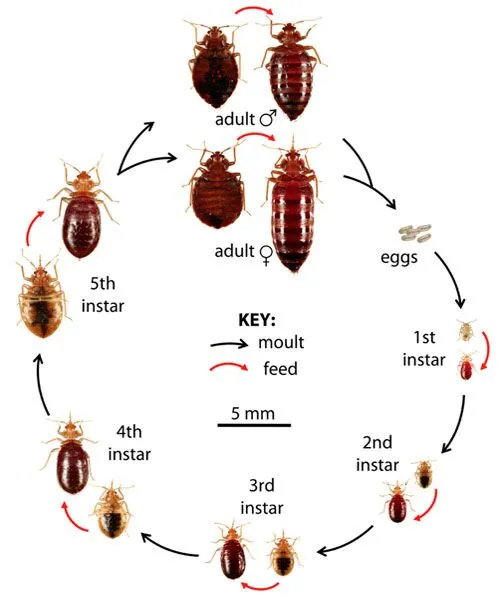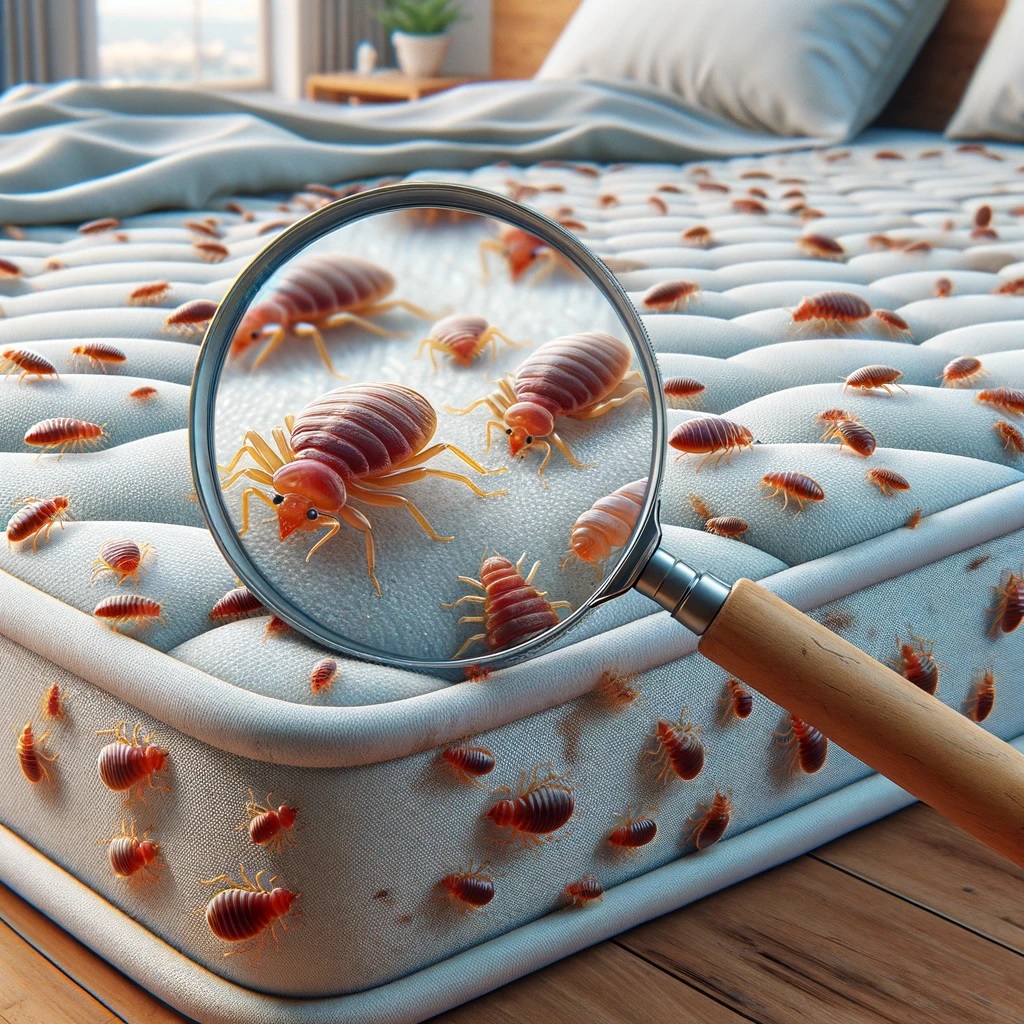By ThermoPest – Your Trusted Pest Control Experts
Have you ever woken up with those maddening red bites and wondered what on earth is going on? If you’re scratching your head over what could be causing the itching, you might be dealing with bed bugs. But here’s the thing—those tiny pests come in all shapes and sizes throughout their life cycle, and today, we’re going to focus on their younger version: the bed bug nymph. At ThermoPest, we often get asked, “What do bed bug nymphs look like, and how can I spot them before it’s too late?” So, let’s break it down for you in a way that makes sense.

What Is a Bed Bug Nymph?
First things first, let’s clear this up: A bed bug nymph is a baby bed bug. Just like human babies grow into adults, bed bugs start off small and work their way up. After hatching from eggs, these little nymphs go through five stages of growth before becoming fully grown adults. During this nymph phase, they need to feed (yep, on you) before they can moult and grow bigger.
But here’s the kicker: bed bug nymphs can be much harder to spot than adults. They’re smaller, lighter in colour, and can be tricky to see unless you know exactly what to look for.
What Do Bed Bug Nymphs Look Like?
Alright, let’s get into the nitty-gritty. Bed bug nymphs may not be as obvious as their adult counterparts, but they’ve got some tell-tale features:
- Size: Nymphs are tiny—about 1mm to 5mm, depending on their age. Imagine something between a pinhead and a sesame seed. Sounds small, right? But trust us, they’re there.
- Colour: Here’s where things get tricky. Nymphs start nearly translucent—almost see-through. That’s why people often miss them. After a good feed, they take on a reddish-brown hue, especially in the belly area. If you spot a tiny bug that looks like it’s just had a snack, you’ve probably found a bed bug nymph.
- Shape: Like adult bed bugs, nymphs have an oval, flat body—but they’re much tinier. When they haven’t fed, they’re flat, but after feeding, they’ll puff up a bit.
Where Do Bed Bug Nymphs Hide?
So, how do you catch these little buggers? Bed bug nymphs are experts at hiding in places you’d least expect. Their go-to spots are usually:
- Mattress seams and the folds of your bedding (makes sense, right?).
- Bed frames—particularly the cracks and joints.
- Upholstered furniture—sofas, cushions, and even behind skirting boards.
One thing we’ve learned over the years at ThermoPest is that bed bugs, including their nymphs, are sneaky. I remember helping a family who had no idea they were dealing with bed bugs because they couldn’t see anything. But after pulling back the seams of the mattress, we found clusters of these nymphs hiding in plain sight.
Bed Bug Nymphs vs. Other Bugs: How to Tell the Difference
You’re not the first person to panic after spotting a tiny critter in your home. The tricky part is figuring out if it’s a bed bug nymph or some other bug. Here’s how to tell:
- Nymphs vs. Fleas: Fleas can look a bit similar, but they’ve got strong legs for jumping. Bed bug nymphs, on the other hand, don’t jump—they just crawl (and not very fast, to be honest).
- Nymphs vs. Carpet Beetles: Carpet beetles are rounder and more colourful, often with spots of brown or orange. Bed bug nymphs are plain in comparison—no fancy patterns, just pale yellow or reddish-brown after feeding.
- Nymphs vs. Ticks: Ticks are usually found on pets and are more rounded. Bed bug nymphs are flatter and almost always found indoors.
How to Spot Bed Bug Nymphs Early
The earlier you spot a bed bug infestation, the easier it is to tackle. Catching nymphs before they grow into adults can save you from a major headache later on. Here’s how you can do that:
- Inspect your bedding regularly: Don’t just throw on fresh sheets without having a look at your mattress seams. Pay special attention to any tiny dark spots (could be bed bug faeces) or pale exoskeletons (they shed their skin as they grow).
- Use a magnifying glass: Sounds a bit extra, right? But it really helps. Those tiny nymphs can be hard to see with the naked eye, so a magnifying glass can make a world of difference.
- Check furniture seams: Bed bugs, especially the nymphs, love to hide in the seams of sofas and chairs. If you’ve got a suspicion, take a closer look at your furniture too.
What If You’ve Found Bed Bug Nymphs?
So, what if you’re unlucky enough to find bed bug nymphs in your home? Don’t panic. Yes, it’s gross, and yes, it’s annoying, but it’s not the end of the world. The first step is to act fast. Bed bugs multiply quickly, and before you know it, those tiny nymphs will be adults laying even more eggs.
Here’s what you can do:
- Isolate any infested items. Strip your bed, bag up your bedding, and wash everything in the hottest setting possible. Heat kills bed bugs and their eggs.
- Vacuum thoroughly. Go over your mattress, bed frame, and any nearby furniture. Make sure to empty the vacuum outside, just in case.
- Call the professionals. DIY treatments can help a little, but they’re rarely enough to get rid of bed bugs completely. That’s where we come in. At ThermoPest, we’ve got years of experience dealing with bed bug infestations, and we use proven methods to get rid of them for good.

Early Identification is Your Best Defence
In the world of bed bugs, early identification is everything. The sooner you catch the nymphs, the easier it is to stop the infestation from getting worse. Don’t wait until you’re seeing adults crawling around—by then, it’s a much bigger job. If you think you’ve got bed bugs (or just want peace of mind), get in touch with ThermoPest. We’ll give your home a thorough inspection and help you sleep soundly again, knowing those little pests are gone for good.
Think you might have a bed bug problem? Give us a call, and we’ll sort it out for you, fast and professionally. Don’t wait until it’s too late!
